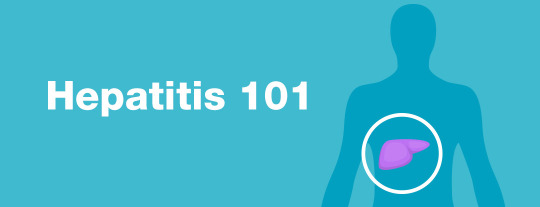
What is Hepatitis?
Hepatitis is the inflammation of the liver. The causes of hepatitis can be infectious (viral, parasitic or bacterial) or noninfectious (alcohol, certain toxins or genetics) in nature. There are a total of five different types of hepatitis, but in the United States the most common forms of hepatitis are viral infection of Hepatitis A, Hepatitis B, and Hepatitis C. Per the CDC, in the United States in 2016 there have been a total of 66,100 new cases of Hepatitis A, B, and C combined.
As most people living with hepatitis do not have symptoms, they are generally unaware that they have the condition until they are seen by a health care professional. If symptoms are present they could occur quite suddenly and include: fever, fatigue, loss of appetite, nausea, vomiting, abdominal pain, dark urine, grey-colored stools, joint pain, and jaundice (yellowing of the skin). Some hepatitis viruses turn into long-lasting (chronic) infections. People can live with hepatitis for years before symptoms develop.
How is Hepatitis spread?
In looking at viral hepatitis, there are a number of ways that hepatitis can be spread from those infected with the virus, but it varies based on the virus itself. For hepatitis A, it is spread to other through, food, drink, or objects contaminated by fecal matter containing the virus. Hepatitis B is primarily spread through blood, semen or other fluids infected with hepatitis B. Hepatitis C is spread when blood from an infected individual enters the body of a person who is not infected.
Who is at risk for being exposed to Hepatitis?
There are a number of different factors that can put a person at risk for contracting viral hepatitis this includes: travel to countries with a prevalence of hepatitis, men who have sex with men (MSM), intravenous drug use (IVDU), healthcare and public safety workers exposed to blood on the job, chronic liver disease, positive HIV status, those born between 1945 and 1965, and those having received a blood transfusion before July 1992. If you meet one or more of these risk factors, a discussion with your healthcare provider is recommended.
How can I prevent Hepatitis?
The best way to prevent hepatitis A and B is through vaccinations. Most individuals will have received their hepatitis A and B vaccines as a child, but if an individual has no documentation of vaccination or carries risk factors with being exposed to the virus, discuss with your healthcare provider about receiving the vaccines. At this moment there is no available vaccine for hepatitis C.
How do you treat hepatitis?
Depending on which type of viral hepatitis one is infected with will determine the treatment that your provider may choose. For hepatitis A, there is currently no medication available to treat the infection. Treatment is limited to bed rest, fluids, and fever reducing medications. For those with hepatitis B, depending on if it is an acute or chronic condition, your provider may decide to start an antiviral medication to suppress the virus. Previously, medications that were used to treat acute and chronic hepatitis C had lengthy durations of therapy (up to 48 weeks), unsatisfactory responses of 50 – 60%, and severe side effects. With recent developments of direct acting antivirals (DAA) we have seen shorter durations of therapy (as short as 8 weeks), positive response rates of up to 99%, and medications with very few side effects.
Sources
1) Viral Hepatitis. Centers for Disease Control and Prevention. https://www.cdc.gov/hepatitis/abc/index.htm. Published April 19, 2018. Accessed May 11, 2018.
2) Viral Hepatitis. Centers for Disease Control and Prevention. https://www.cdc.gov/hepatitis/statistics/2016surveillance/index.htm. Published April 16, 2018. Accessed May 11, 2018.
3) Immunization Schedules. Centers for Disease Control and Prevention. https://www.cdc.gov/vaccines/schedules/hcp/imz/adult.html. Published March 5, 2018. Accessed May 14, 2018.
4) Viral Hepatitis. Centers for Disease Control and Prevention. https://www.cdc.gov/hepatitis/hav/guidelinesa.htm. Published September 19, 2017. Accessed May 11, 2018.
5) Manns MP, Wedemeyer H, Cornberg M. Treating viral hepatitis C: efficacy, side effects, and complications. Gut. 2006;55(9):1350-9.
6) Terrault NA, Bzowej NH, Chang KM, et al. AASLD guidelines for treatment of chronic hepatitis B. Hepatology. 2016;63(1):261-83.
7) AASLD-IDSA. Recommendations for testing, managing, and treating hepatitis C. http://www.hcvguidelines.org. Accessed May 11, 2018.


